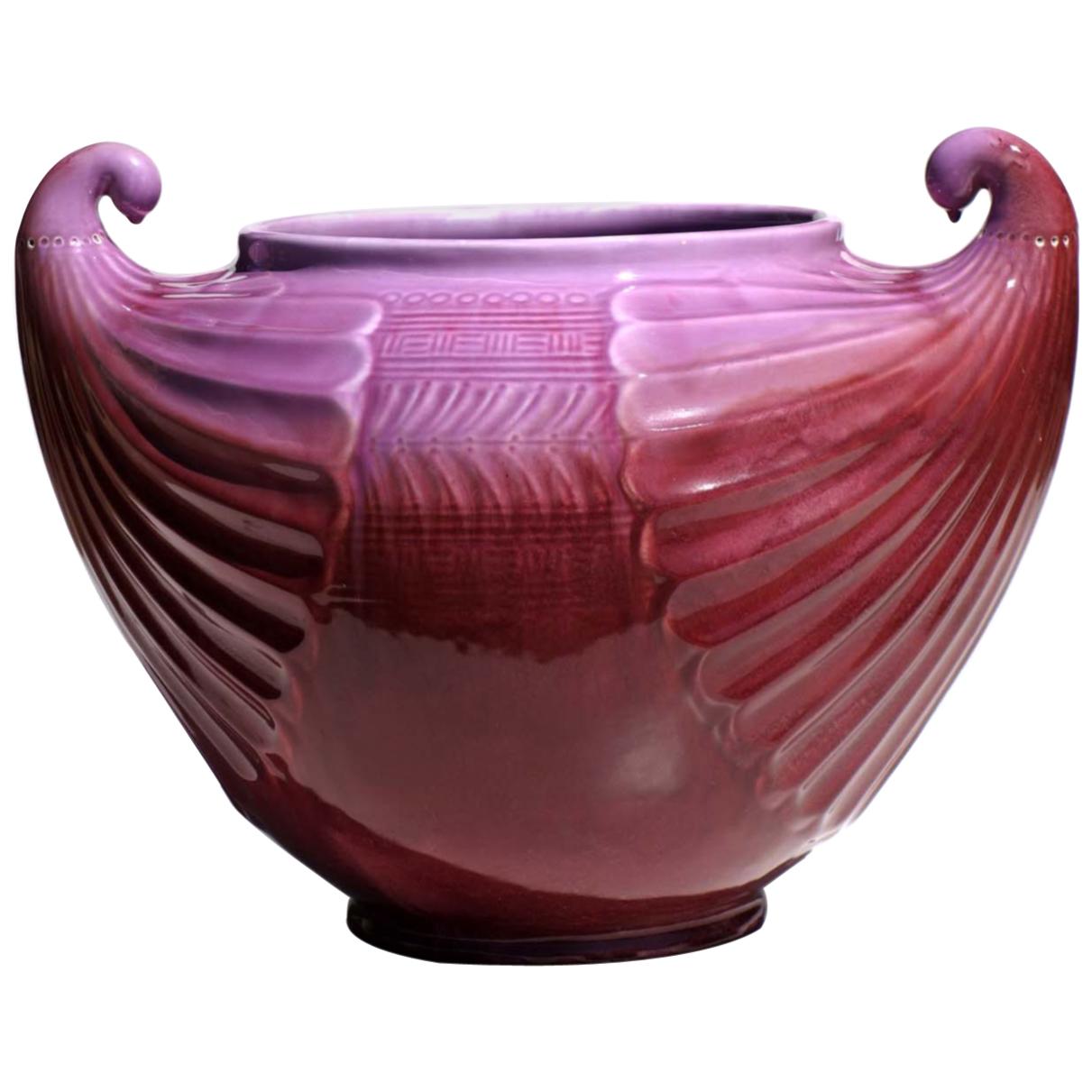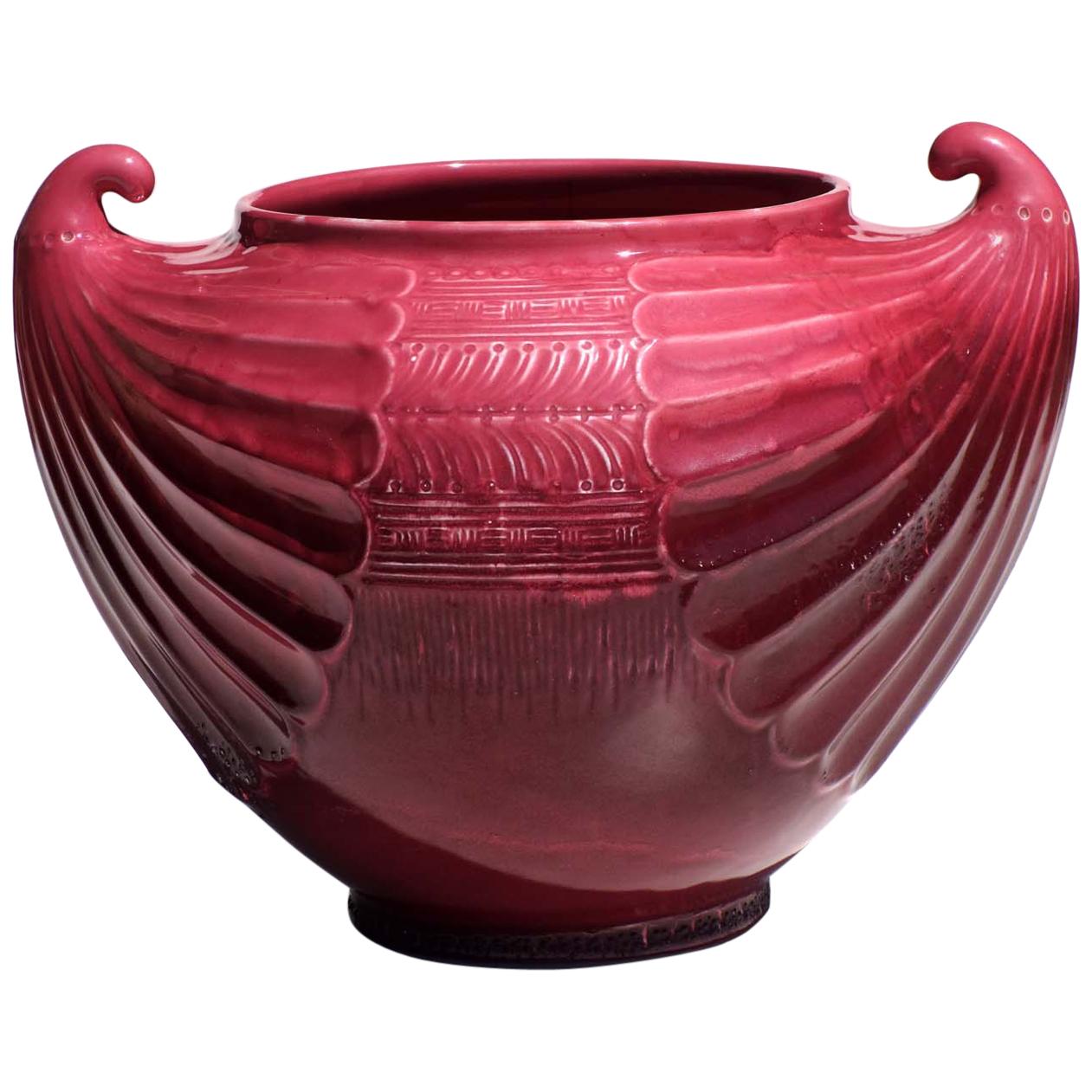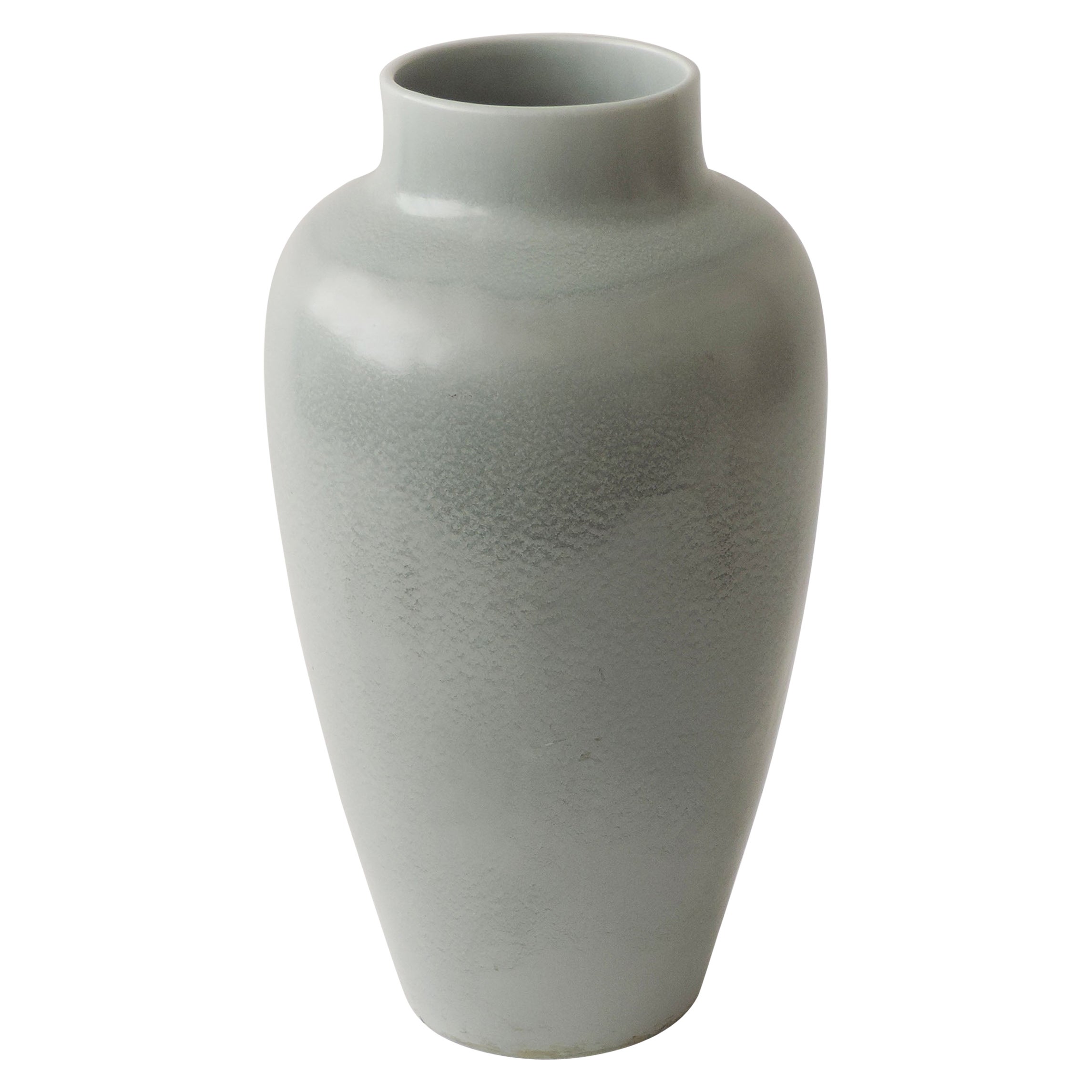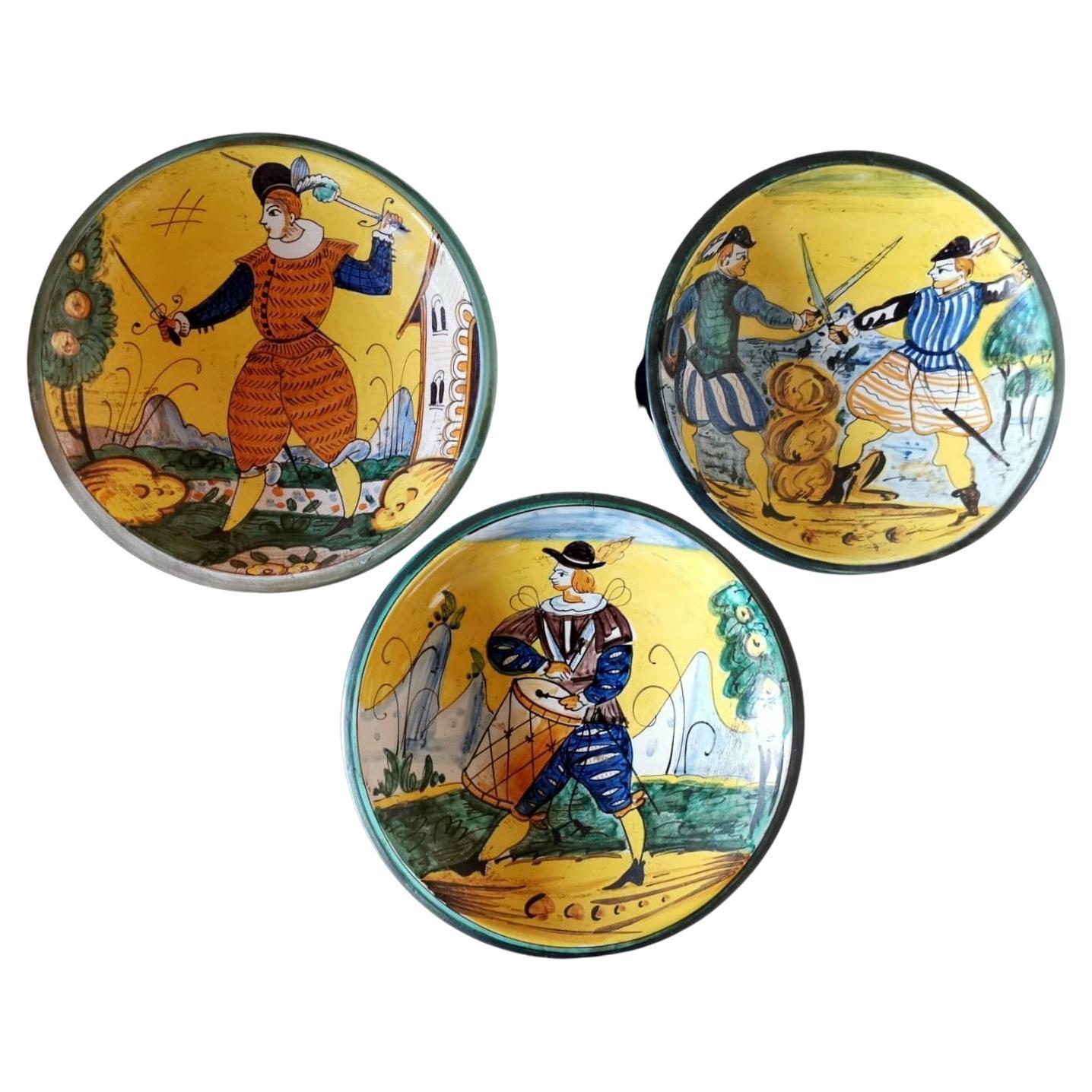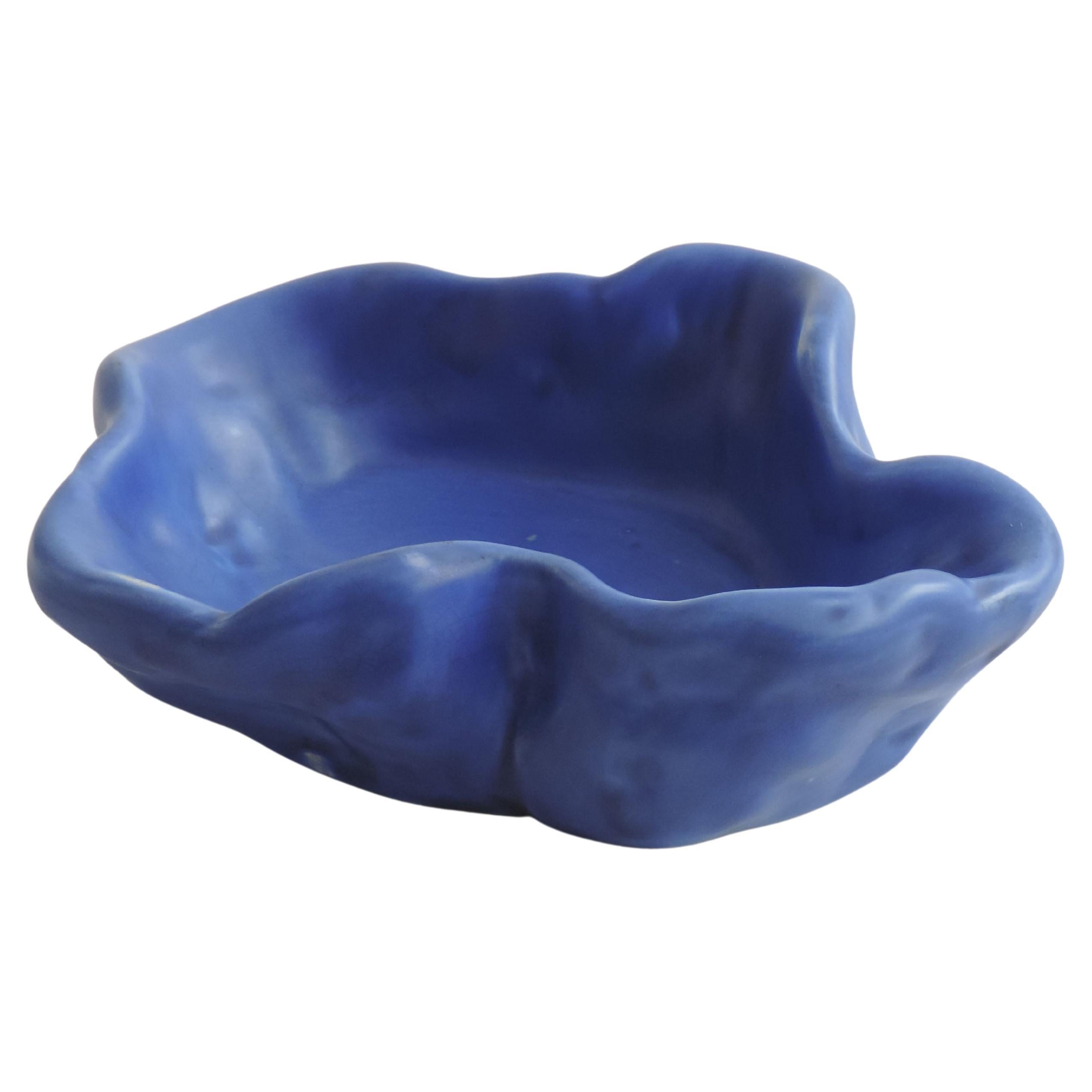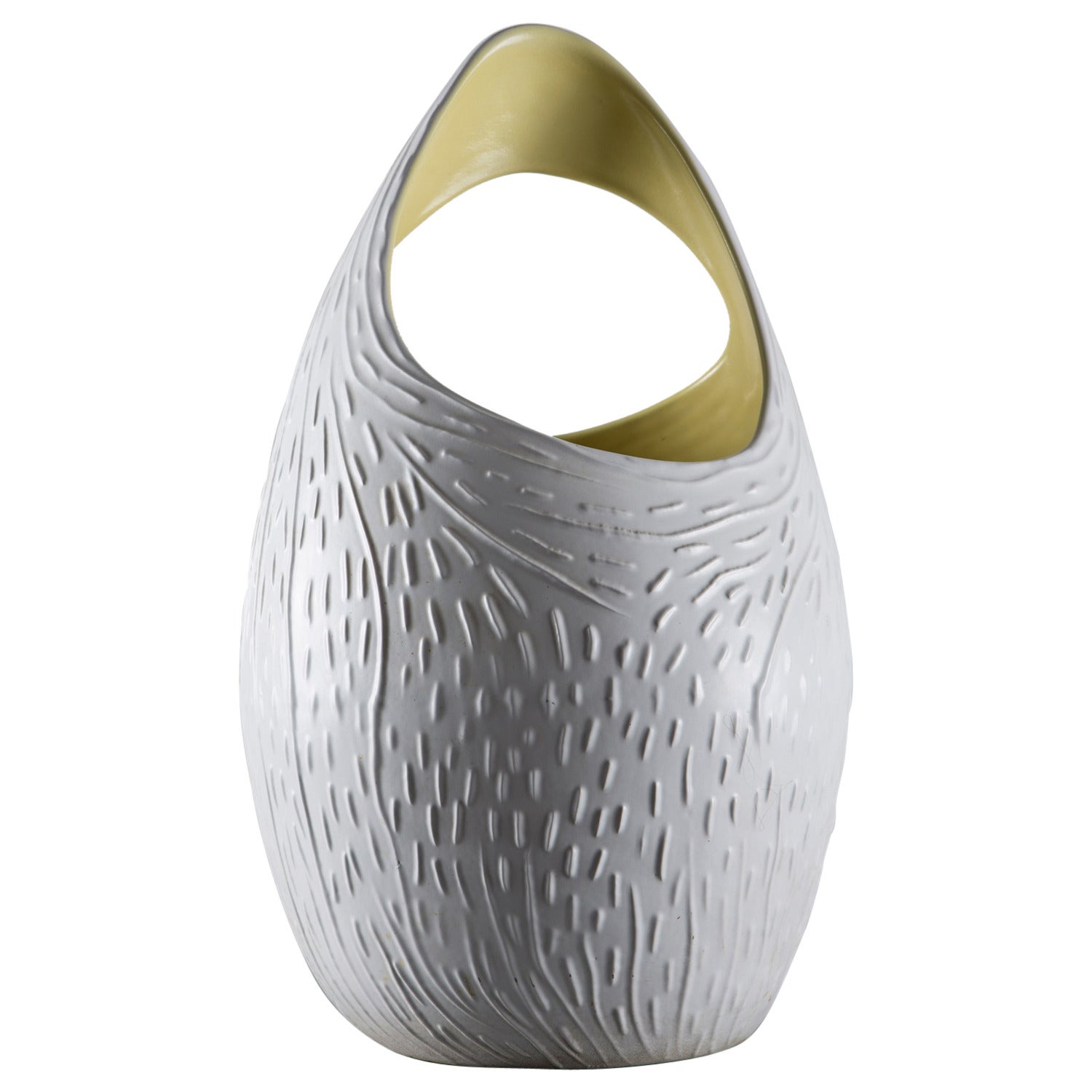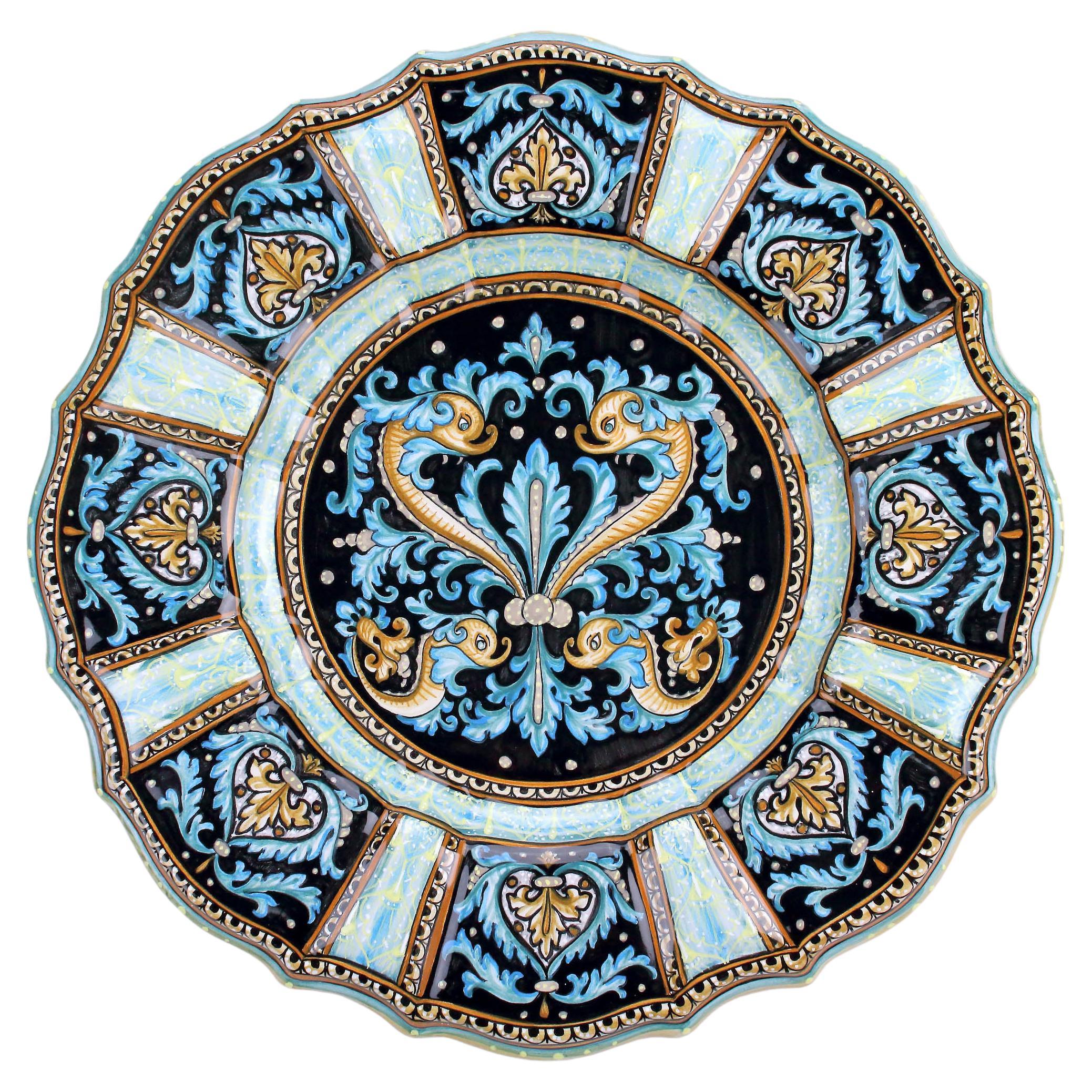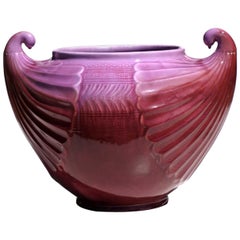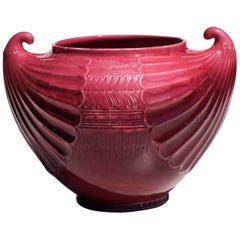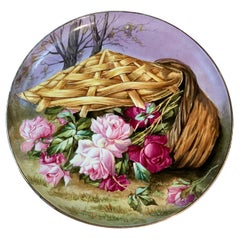
SCI Laveno Art Nouveau Italian Hand Painted Ceramic Plate to Hang on the Wall
View Similar Items
1 of 20
SCI Laveno Art Nouveau Italian Hand Painted Ceramic Plate to Hang on the Wall
About the Item
- Creator:S.C.I. Laveno (Manufacturer)
- Dimensions:Height: 1.97 in (5 cm)Diameter: 21.26 in (54 cm)
- Style:Art Nouveau (Of the Period)
- Materials and Techniques:
- Place of Origin:
- Period:1900-1909
- Date of Manufacture:1900
- Condition:Wear consistent with age and use.
- Seller Location:Firenze, IT
- Reference Number:1stDibs: LU952927235422
You May Also Like
- Liberty Italian Laveno Ceramic Floral Art Nouveau Cachepot with StandBy S.C.I. Laveno, Giorgio SpertiniLocated in Brescia, ITVase with stand by Giorgio Spertini, SCI Laveno Italy, 1900-1908 Perfect condiction.Category
Early 20th Century Italian Art Nouveau Vases
MaterialsPottery
- Early 1900 by Christopher Dresser SCI Laveno Secessionist Ceramic Cachepot VaseBy S.C.I. Laveno, Christopher DresserLocated in Brescia, ITPurple ceramic cachepot Perfect condiction.Category
Early 20th Century Italian Art Nouveau Vases
MaterialsPottery
- Early 1900 by Christopher Dresser SCI Laveno Jugendstill Ceramic Cachepot VaseBy S.C.I. Laveno, Christopher DresserLocated in Brescia, ITPurple ceramic cachepot Perfect condiction.Category
Early 20th Century Italian Art Nouveau Vases
MaterialsPottery
- Art Deco Guido Andlovitz Ceramic Vase for S.C.I Laveno, Italy, 1940sBy S.C.I. Laveno, Guido AndlovitzLocated in Milan, ITArt Deco Guido Andlovitz ceramic vase for S.C.I Laveno, Italy, 1940s.Category
Vintage 1940s Italian Mid-Century Modern Ceramics
MaterialsCeramic
- Monumental Guido Andlovitz S.C.I Laveno Ceramic Vase, Italy, 1940sBy S.C.I. LavenoLocated in Milan, ITMonumental S.C.I Ceramic vase, Italy 1940s.Category
Vintage 1940s Italian Art Deco Ceramics
MaterialsCeramic
- Deruta Italian Ceramic Set Three Hand Painted Wall PlatesBy DerutaLocated in Prato, TuscanyWe kindly suggest you read the whole description, because with it we try to give you detailed technical and historical information to guarantee the authenticity of our objects. Three delightful and colorful round ceramic wall plates; they were created completely by hand between 1965 and 1968 by a small artisan workshop in Deruta (Perugia, Italy) respecting ancient traditions and raw materials; clay, enamel, colors, water, fire and the hands of the artist: these are the simple elements that lead to the creation of a ceramic article; on the back they have two holes so they can be hung on the wall; they represent characters in Renaissance clothing, each in a different pose: the first is a swordsman who wields a special weapon of the time the "side sword" with S-shaped guard and a dagger with guard very elaborate, useful to trap the blade of the opponent; the "spada da lato" (side sword) is that elegant and handy sword that, from the second half of the fifteenth century and throughout the sixteenth century, is worn on the belt by nobles or rich, a weapon designed for self-defense or to be used in a duel; In fact the second plate represents just a duel in which the two contenders always use "swords side", the one on the left also has a small shield and the one on the right wields an effective and perfidiously fast double-edged dagger; In the third plate is painted a "naccarino" who plays a cylindrical drum (similar to those spread by the Lanzichenecchi from the fifteenth-sixteenth century) held on the side and beaten with two sticks, the "naccarini" were players of small instruments whose presence was required every time you had to give particular solemnity to a public event. We don't know why the people of Deruta began to work the terracotta and to produce vases and manufactured articles in ceramics but we know with all certainty that already in the Middle Ages the city was known for the production of ceramics of high quality, the first written sources make to date the ceramics of Deruta (Perugia) to 1282. In the Renaissance, they were active to Deruta more than fifty furnaces with which they collaborated artists like the Perugino, the Pinturicchio, and Luca Signorelli. The mastery of the artisans and artists of Deruta ceramics...Category
Mid-20th Century Italian Medieval Ceramics
MaterialsCeramic
$527 Sale Price / set20% Off
Recently Viewed
View AllMore Ways To Browse
Ceramics Art Nouveau
Art Nouveau Ceramics
Antique Italian Plate
Antique Italian Plates
Antique Rose Flower
Antique Rose Flowers
Silver S C
Antique Ceramic Plates
Antique Ceramic Plate
White Glass 1900
Antique Silver Wall Art
Silver Engrave S
Art Nouveau Gold Plates
Silver Engraved Paint
Hand Painted Roses Plates
Ceramic Wall Hang
Ceramic Plates With Flowers
Hand Painted Italian Wall Plate

